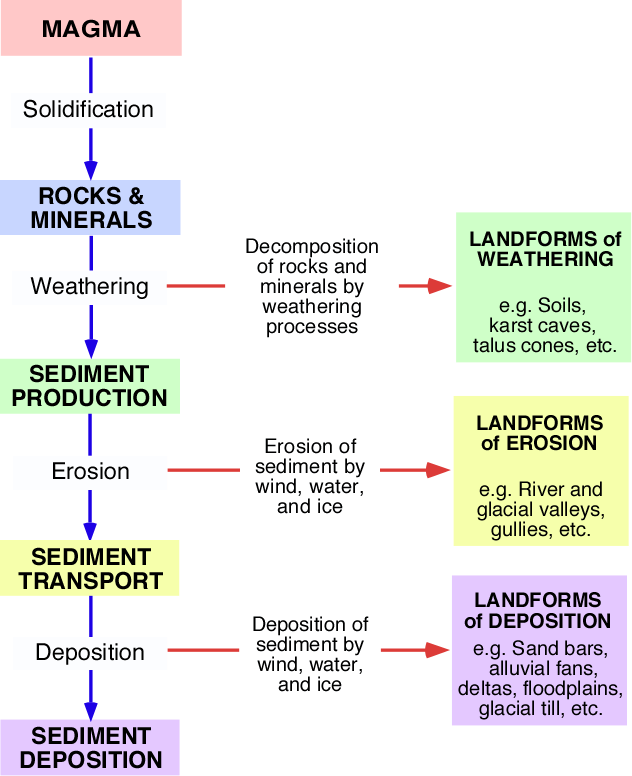The landforms that are found on the surface of the Earth can be grouped into 4 categories:
(1) Structural Landforms - landforms that are created by the solidification of large quantities of magma or by massive movements due or rock because of plate tectonics. This includes landforms like: shield, fold mountains, rift valleys, and volcanoes.
(2) Weathering Landforms - landforms that are created by the physical, chemical or biological decomposition of rock through weathering. Weathering produces landforms where rocks and sediments are decomposed and disintegrated. This includes landforms with some of the following geomorphic features: karst, patterned ground, and soil profiles.
(3) Erosional Landforms - landforms formed from the removal of weathered and eroded surface materials by wind, water, glaciers, and gravity. This includes landforms with some of the following geomorphic features: river valleys, glacial valleys, and coastal cliffs.
(4) Depositional Landforms - landforms formed from the deposition of weathered and eroded surface materials. On occasion, these deposits can be compressed, altered by pressure, heat and chemical processes to become sedimentary rocks. This includes landforms with some of the following geomorphic features: beaches, deltas, flood plains, and glacial moraines.
Many landforms show the influence of several of the above processes. We call these landforms polygenetic. Processes acting on landforms can also change over time, and a single landscape can undergo several cycles of development. We call this type landscape development polycyclic.
The following graphical model describes the relationship between general landform types and the geomorphic processes of weathering, erosion, and sediment deposition (Figure 10q-1).

Figure 10q-1: Simple model of landform development.